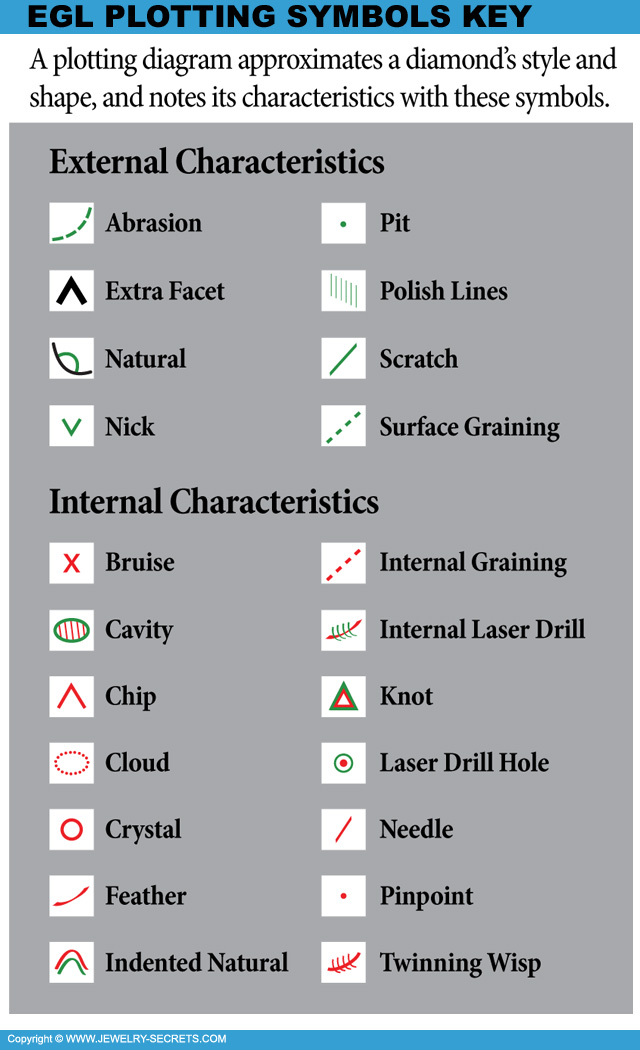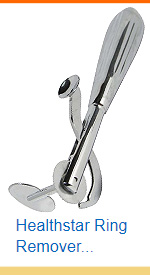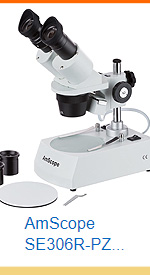DIAMOND FLAWS CHART
DIAMOND REPORTS KEY OF SYMBOLS FOR INCLUSIONS & BLEMISHES
This post contains affiliate links. If you use these links to buy something I may earn a commission. Thanks! As an Amazon Associate I also earn from qualifying purchases.

When you look at a Diamond Plot on a Diamond Report (often called a Certificate), you’ll see a lot of lines, marks, and squiggles of different colors, like Red or Green.
But, what do these all mean?
What Inclusions, Flaws, and Blemishes do they represent?
You’ll need a Key of Symbols Chart to explain them.
And that’s exactly what I’ve done here!
I’ve gone to the 5 leading Diamond Grading Certification Companies in the World: GIA (Gemological Institute of America), AGS (American Gem Society), EGL (European Gemological Laboratory), IGI (International Gemological Institute), and HRD (HRD Institute of Gemmology – HRD means: “Hoge Raad voor Diamant“, which translated in English means “Diamond High Council” or DHC), to obtain further information.
I requested a chart of their Key of Symbols for their Diamond Plotting and Grading, and what they sent me is just beautiful and fascinating to look at.
But first, let’s take a look at an Diamond Example so you understand what I’m talking about… (These Diamonds are for Sale at James Allen)
Diamond Example 1
The Round Brilliant Cut Diamond shown above, has the Diamond Plot shown below…
You’ll that it has both Red Marks (Meaning Internal Inclusions) and Green Marks (Meaning External Inclusions, called Blemishes, that show up on the outside or surface of the stone). It’s a little hard to tell from this Diamond Plot image, but the Cavity and Knots are External Blemishes, and are marked in Green (More visible from the Bottom View of the Diamond, the Pavilion).
And if you look at the Comments Section of the actual Report, you’ll see that not all the Inclusions and Flaws are actually shown on the drawing. It says: Pinpoints are not shown. Surface Graining is not shown, as seen here…
The interesting part of it is this; there are up to 24 different Markings and Symbols that refer to the different types of Imperfections found in Diamonds (the MORE Imperfections there are in a Stone, the lower the Clarity Grade will be).
GIA Key of Symbols
For a closer look at what the Symbols mean, take a look at the GIA Key of Symbols used in their Diamond Reports…

EGL Key of Symbols
Now, let’s take a look at EGL’s Diamond Report Key of Symbols…

They look pretty similar…
When AGS and IGI send me their Plotting Symbols I’ll post them here as well.
So lastly, here’s HRD’s!
HRD Key of Symbols
And HRD’s Key of Symbols…

Diamond Example
Now, let’s take a look at another example:
This Round Diamond above has a Diamond Plot that looks like this:
The Additional Comments for this Diamond are here:
Another Diamond Example
Take a look at one more Diamond Plot…
Now we bring up the Diamond Plot and Key of Symbols…
You see how all those Red and Green Lines and Marks start to make sense?
Naturals
The Naturals that are shown on the Diamond above, are Diamond Characteristics that normally show up on the Girdle of the Diamond and are External Inclusions (shown in Green on the Plot above).
It’s actually kind of fun to scope out a couple of Loose Diamonds and compare the Flaws on the Plot, to the Key of Symbols, to see exactly what resides in the stone.
It’s very Cool stuff!
One Last Diamond Example
Let’s take a look at one more Diamond. This time a Princess Cut Diamond.
And now, let’s look at the Diamond Plot and Symbols…
As you can see, every Inclusion Width, Length, Shape and Size can vary wildy. And under magnification (10x – Using a Jewelers Loupe or a Microscope) they look much different than they would with the naked eye. It’s an awesome microscopic world to scrutinize. Every stone is different and every Plot and Diagram is different as well.
So grab a Diamond, look at the Plot, and study the Key of Symbols. You’ll understand more of what Clarity means, and how to actually Judge Flaws and Inclusions for yourself.
Trust me, you’ll never look at another Blemish the same! :)




























Leave a comment